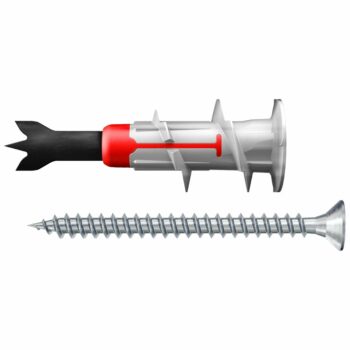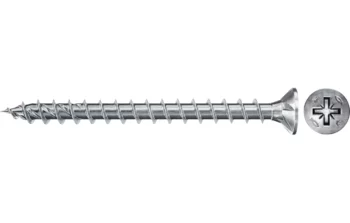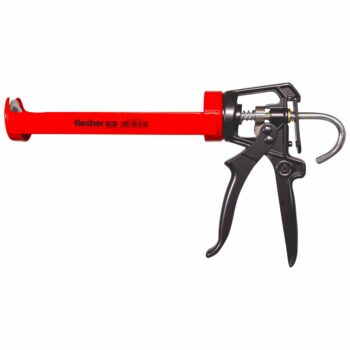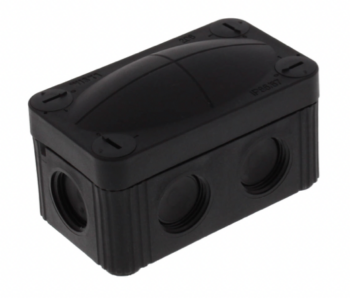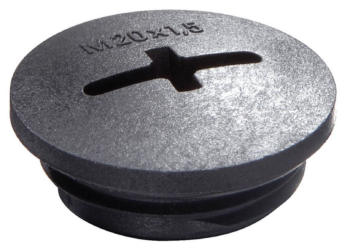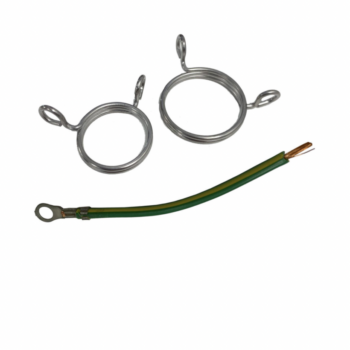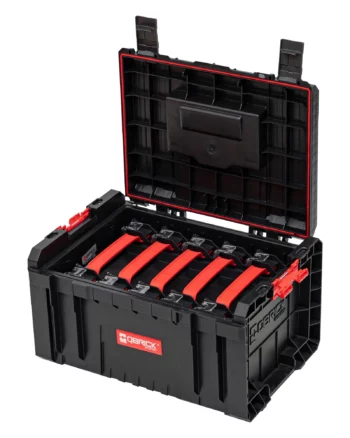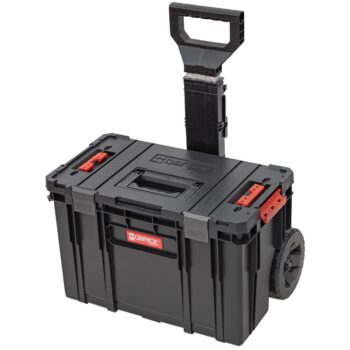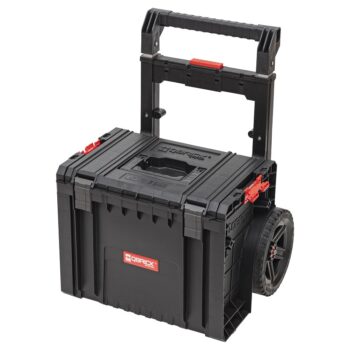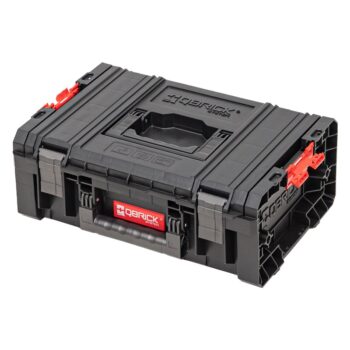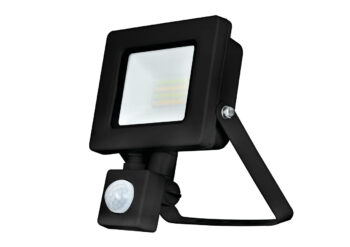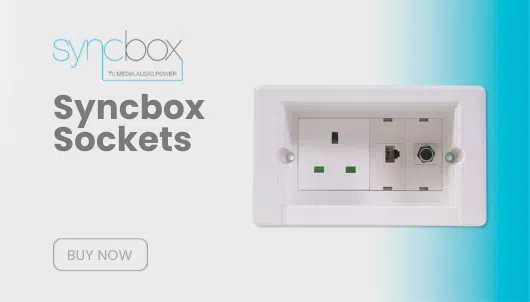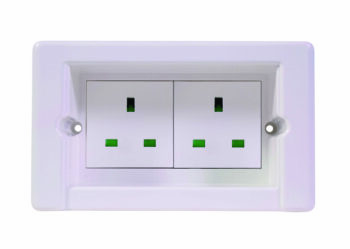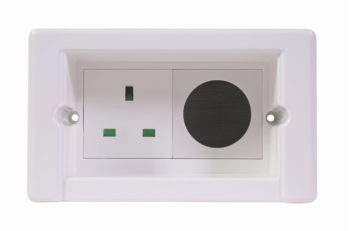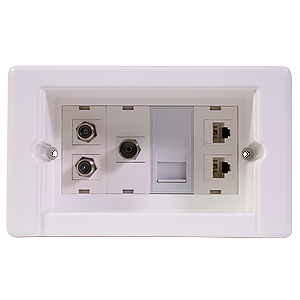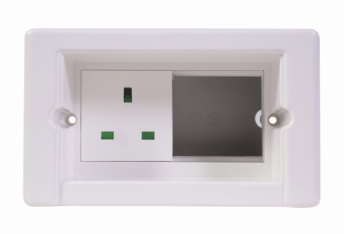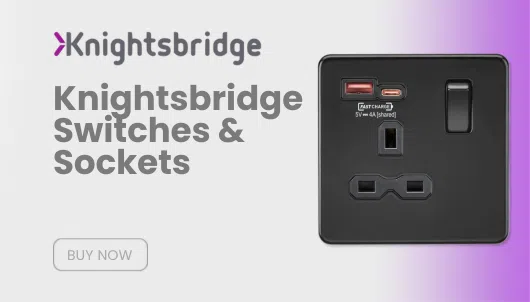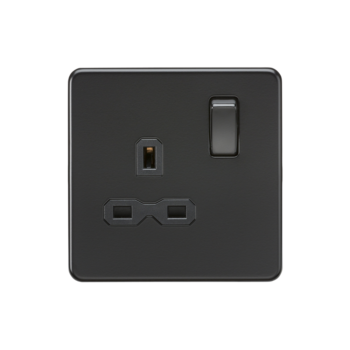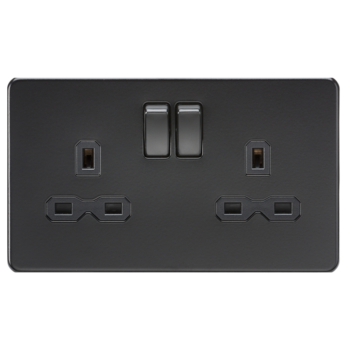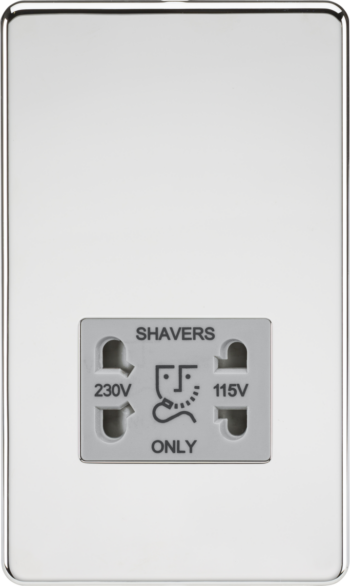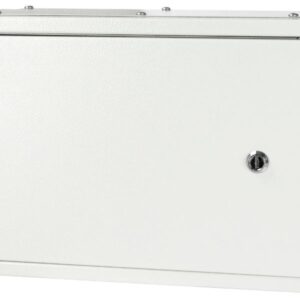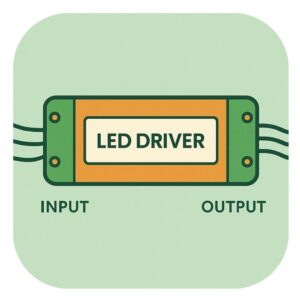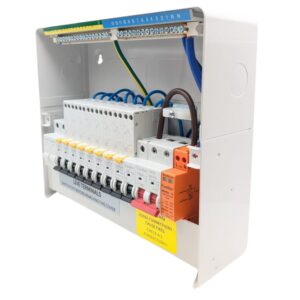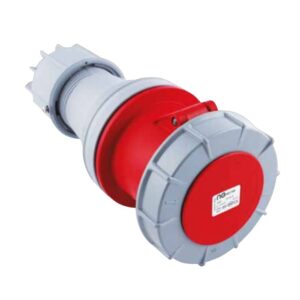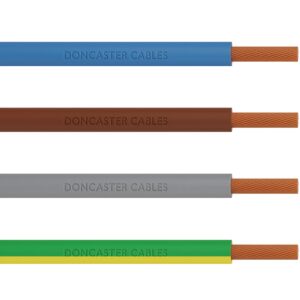The Complete Guide to the new Fusebox Bidirectional RCBO
With the evolving demands on electrical systems, Fusebox Bidirectional RCBOs are game-changers in circuit protection, offering a high level of safety, efficiency, and adaptability for modern installations. As concerns about system integrity, protection against faults, and energy efficiency grow, bidirectional RCBOs provide advanced solutions by allowing current flow in both directions, enhancing their versatility in settings that include renewable energy sources like solar panels, and power-sharing systems. This comprehensive guide will dive into everything from the fundamentals of bidirectional RCBOs and their purpose, to installation tips and UK regulations.
By the end of this guide, you’ll have a clear understanding of what sets Fusebox Bidirectional RCBOs apart and how they can enhance safety in your electrical installations.
Table of contents
- The Complete Guide to the new Fusebox Bidirectional RCBO
- Conclusion
- Frequently Asked Questions (FAQ)
- Complete Guide to Advanced Circuit Protection
- Table of Contents
- What is a Fusebox Bidirectional RCBO?
- How Bidirectional RCBOs Differ from Standard RCBOs
- Key Benefits of Fusebox Bidirectional RCBOs
- Application of Bidirectional RCBOs in Renewable Energy Systems
- How Fusebox Bidirectional RCBOs Work
- UK Regulations and Standards for Bidirectional RCBOs
- Installation and Maintenance Tips
- Conclusion
- Frequently Asked Questions (FAQ)
What is a Fusebox Bidirectional RCBO?
A Fusebox Bidirectional RCBO (Residual Current Circuit Breaker with Overload protection) is a specialized circuit protection device designed to detect and isolate faults such as overloads, short circuits, and earth faults. The unique characteristic of a bidirectional RCBO is its ability to handle current flow in both directions, allowing it to protect circuits that may have power flowing from both ends. This is especially critical in renewable energy setups, like solar panel installations, where energy flows back to the grid or within hybrid systems.
With Fusebox’s reputation for high-quality consumer units and protective devices, their bidirectional RCBO line is engineered to meet the rigorous demands of today’s smart, sustainable, and safe energy environments.

How Bidirectional RCBOs Differ from Standard RCBOs
Standard RCBOs are typically designed for unidirectional current flow, meaning they monitor and control current in a single direction—from the power source to the connected device. However, in modern systems, particularly those involving renewable energy sources or battery backup systems, power may flow in reverse (back into the circuit) under certain conditions.
Fusebox Bidirectional RCBOs:
- Handle Current in Both Directions: Ensuring protection whether power is drawn from or fed back into the grid.
- Adapt to Energy-Generating Systems: These RCBOs meet the unique needs of setups that integrate sources like solar or wind energy.
- Optimize Safety in Smart Homes: For homes with backup batteries or two-way charging systems (such as electric vehicle chargers), bidirectional RCBOs offer reliable, advanced protection.
This added capability ensures that safety is maintained regardless of the direction of the electrical flow, making Fusebox Bidirectional RCBOs ideal for diverse and dynamic electrical systems.
Key Benefits of Fusebox Bidirectional RCBOs
Fusebox Bidirectional RCBOs offer several advantages, making them suitable for both traditional and modern energy setups:
- Enhanced Protection in Renewable Systems: Bidirectional RCBOs prevent faults and overloads in installations where power flows bidirectionally, such as in renewable energy or hybrid systems.
- Improved Circuit Independence: Each bidirectional RCBO protects a single circuit, meaning issues in one area don’t affect the entire system. This isolation is beneficial in multi-circuit systems where continuous operation is critical.
- Reliable and Safe Power Flow: By detecting and interrupting both earth faults and overloads regardless of direction, Fusebox bidirectional RCBOs add a robust safety layer.
- Versatile in Diverse Applications: Beyond renewable energy, bidirectional RCBOs are perfect for EV charging setups, battery storage solutions, and any electrical environment involving bidirectional power.
- Compliant with UK Standards: Fusebox RCBOs are designed in accordance with BS 7671 standards, ensuring that they meet the latest UK regulations for safe and effective installation.
With these benefits, Fusebox Bidirectional RCBOs enhance safety, improve efficiency, and enable flexibility in a range of electrical setups, making them indispensable in today’s consumer units.
Application of Bidirectional RCBOs in Renewable Energy Systems
With the UK’s ambitious goals for renewable energy, systems like solar, wind, and hybrid storage solutions are becoming more common. In these setups, bidirectional RCBOs are essential because they protect both the infeed from the grid and the feedback to the grid or storage device.
For example:
- Solar Power Systems: When excess energy is generated, it can flow back into the grid. Bidirectional RCBOs manage this reverse flow safely.
- Battery Storage: Power from batteries may discharge into the home’s main grid during high demand, or charge from the grid when solar power is low. Bidirectional RCBOs facilitate safe bidirectional current flow.
- Electric Vehicle (EV) Charging Stations: Some modern EV chargers can act as both load and generator, depending on the car’s status. Here, bidirectional RCBOs help in safely managing the two-way current flow.
The adaptability of Fusebox Bidirectional RCBOs in these contexts supports a safer and more reliable renewable energy infrastructure, in line with the UK’s push for sustainable energy.
How Fusebox Bidirectional RCBOs Work
Bidirectional RCBOs contain specialized mechanisms for detecting both earth leakage currents and overcurrent faults in either direction. Let’s break down the main components:
- Residual Current Detection: Monitors for imbalance in live and neutral currents. If a leakage is detected (indicative of a potential fault), the RCBO immediately trips, stopping the current flow.
- Overcurrent Protection: If a current spike occurs in either direction, the RCBO’s built-in thermal or magnetic triggers will disconnect the circuit.
- Bidirectional Monitoring: Fusebox Bidirectional RCBOs are specifically calibrated to sense and react to current changes from either side of the circuit, maintaining safety regardless of current direction.
This dual-functionality makes these RCBOs unique, reliable, and suitable for installations where traditional, unidirectional protection isn’t enough.
UK Regulations and Standards for Bidirectional RCBOs
In the UK, BS 7671 (often referred to as the IET Wiring Regulations) outlines the standards for electrical installations, ensuring safety and reliability. Bidirectional RCBOs must comply with these standards, particularly as they pertain to renewable energy and hybrid systems.
Key regulatory points include:
- Individual Circuit Protection: Each circuit should ideally be protected by its own RCBO to prevent entire system shutdowns during a fault.
- Sensitivity and Compatibility: In renewable installations, RCBOs should offer appropriate sensitivity for detecting faults without causing nuisance tripping.
- Routine Testing Requirements: According to BS 7671, RCBOs must undergo regular testing, especially in high-demand or bidirectional systems.
Fusebox Bidirectional RCBOs are fully compliant with these standards, providing peace of mind and ensuring installations meet regulatory requirements.
Installation and Maintenance Tips
Installation Guidelines
- Turn Off Main Power: Always switch off the main power before installing RCBOs to avoid hazards.
- Ensure Correct Rating: Make sure the RCBO rating aligns with the circuit’s requirements.
- Wiring: Refer to Fusebox installation manuals for specific wiring requirements, and consult BS 7671 standards.
Maintenance Tips
- Monthly Testing: Use the RCBO test button regularly to verify functionality.
- Visual Inspections: Inspect the RCBOs periodically for signs of wear or damage, particularly in high-usage setups.
- Professional Assessment: Schedule regular maintenance checks by a qualified electrician to ensure ongoing compliance.
Following these tips will help maintain the longevity and safety of Fusebox Bidirectional RCBOs in any installation.
Conclusion
Fusebox Bidirectional RCBOs offer advanced, adaptable protection for today’s complex electrical systems. By allowing current to flow in both directions, these RCBOs are especially valuable for renewable energy setups, hybrid systems, and even smart home configurations with EV chargers and backup batteries. Their ability to detect and isolate faults on circuits with bidirectional current ensures optimal safety and reliability.
Whether for residential or commercial use, Fusebox Bidirectional RCBOs are a powerful addition to consumer units, meeting the latest safety standards and supporting the UK’s sustainability goals.
Frequently Asked Questions (FAQ)
Complete Guide to Advanced Circuit Protection
With the evolving demands on electrical systems, Fusebox Bidirectional RCBOs are game-changers in circuit protection, offering a high level of safety, efficiency, and adaptability for modern installations. As concerns about system integrity, protection against faults, and energy efficiency grow, bidirectional RCBOs provide advanced solutions by allowing current flow in both directions, enhancing their versatility in settings that include renewable energy sources like solar panels, and power-sharing systems. This comprehensive guide will dive into everything from the fundamentals of bidirectional RCBOs and their purpose, to installation tips and UK regulations.
By the end of this guide, you’ll have a clear understanding of what sets Fusebox Bidirectional RCBOs apart and how they can enhance safety in your electrical installations.
Table of Contents
- What is a Fusebox Bidirectional RCBO?
- How Bidirectional RCBOs Differ from Standard RCBOs
- Key Benefits of Fusebox Bidirectional RCBOs
- Application of Bidirectional RCBOs in Renewable Energy Systems
- How Fusebox Bidirectional RCBOs Work
- UK Regulations and Standards for Bidirectional RCBOs
- Installation and Maintenance Tips
- Conclusion
- Frequently Asked Questions (FAQ)
What is a Fusebox Bidirectional RCBO?
A Fusebox Bidirectional RCBO (Residual Current Circuit Breaker with Overload protection) is a specialized circuit protection device designed to detect and isolate faults such as overloads, short circuits, and earth faults. The unique characteristic of a bidirectional RCBO is its ability to handle current flow in both directions, allowing it to protect circuits that may have power flowing from both ends. This is especially critical in renewable energy setups, like solar panel installations, where energy flows back to the grid or within hybrid systems.
With Fusebox’s reputation for high-quality consumer units and protective devices, their bidirectional RCBO line is engineered to meet the rigorous demands of today’s smart, sustainable, and safe energy environments.
How Bidirectional RCBOs Differ from Standard RCBOs
Standard RCBOs are typically designed for unidirectional current flow, meaning they monitor and control current in a single direction—from the power source to the connected device. However, in modern systems, particularly those involving renewable energy sources or battery backup systems, power may flow in reverse (back into the circuit) under certain conditions.
Fusebox Bidirectional RCBOs:
- Handle Current in Both Directions: Ensuring protection whether power is drawn from or fed back into the grid.
- Adapt to Energy-Generating Systems: These RCBOs meet the unique needs of setups that integrate sources like solar or wind energy.
- Optimize Safety in Smart Homes: For homes with backup batteries or two-way charging systems (such as electric vehicle chargers), bidirectional RCBOs offer reliable, advanced protection.
This added capability ensures that safety is maintained regardless of the direction of the electrical flow, making Fusebox Bidirectional RCBOs ideal for diverse and dynamic electrical systems.
Key Benefits of Fusebox Bidirectional RCBOs
Fusebox Bidirectional RCBOs offer several advantages, making them suitable for both traditional and modern energy setups:
- Enhanced Protection in Renewable Systems: Bidirectional RCBOs prevent faults and overloads in installations where power flows bidirectionally, such as in renewable energy or hybrid systems.
- Improved Circuit Independence: Each bidirectional RCBO protects a single circuit, meaning issues in one area don’t affect the entire system. This isolation is beneficial in multi-circuit systems where continuous operation is critical.
- Reliable and Safe Power Flow: By detecting and interrupting both earth faults and overloads regardless of direction, Fusebox bidirectional RCBOs add a robust safety layer.
- Versatile in Diverse Applications: Beyond renewable energy, bidirectional RCBOs are perfect for EV charging setups, battery storage solutions, and any electrical environment involving bidirectional power.
- Compliant with UK Standards: Fusebox RCBOs are designed in accordance with BS 7671 standards, ensuring that they meet the latest UK regulations for safe and effective installation.
With these benefits, Fusebox Bidirectional RCBOs enhance safety, improve efficiency, and enable flexibility in a range of electrical setups, making them indispensable in today’s consumer units.
Application of Bidirectional RCBOs in Renewable Energy Systems
With the UK’s ambitious goals for renewable energy, systems like solar, wind, and hybrid storage solutions are becoming more common. In these setups, bidirectional RCBOs are essential because they protect both the infeed from the grid and the feedback to the grid or storage device.
For example:
- Solar Power Systems: When excess energy is generated, it can flow back into the grid. Bidirectional RCBOs manage this reverse flow safely.
- Battery Storage: Power from batteries may discharge into the home’s main grid during high demand, or charge from the grid when solar power is low. Bidirectional RCBOs facilitate safe bidirectional current flow.
- Electric Vehicle (EV) Charging Stations: Some modern EV chargers can act as both load and generator, depending on the car’s status. Here, bidirectional RCBOs help in safely managing the two-way current flow.
The adaptability of Fusebox Bidirectional RCBOs in these contexts supports a safer and more reliable renewable energy infrastructure, in line with the UK’s push for sustainable energy.
How Fusebox Bidirectional RCBOs Work
Bidirectional RCBOs contain specialized mechanisms for detecting both earth leakage currents and overcurrent faults in either direction. Let’s break down the main components:
- Residual Current Detection: Monitors for imbalance in live and neutral currents. If a leakage is detected (indicative of a potential fault), the RCBO immediately trips, stopping the current flow.
- Overcurrent Protection: If a current spike occurs in either direction, the RCBO’s built-in thermal or magnetic triggers will disconnect the circuit.
- Bidirectional Monitoring: Fusebox Bidirectional RCBOs are specifically calibrated to sense and react to current changes from either side of the circuit, maintaining safety regardless of current direction.
This dual-functionality makes these RCBOs unique, reliable, and suitable for installations where traditional, unidirectional protection isn’t enough.
UK Regulations and Standards for Bidirectional RCBOs
In the UK, BS 7671 (often referred to as the IET Wiring Regulations) outlines the standards for electrical installations, ensuring safety and reliability. Bidirectional RCBOs must comply with these standards, particularly as they pertain to renewable energy and hybrid systems.
Key regulatory points include:
- Individual Circuit Protection: Each circuit should ideally be protected by its own RCBO to prevent entire system shutdowns during a fault.
- Sensitivity and Compatibility: In renewable installations, RCBOs should offer appropriate sensitivity for detecting faults without causing nuisance tripping.
- Routine Testing Requirements: According to BS 7671, RCBOs must undergo regular testing, especially in high-demand or bidirectional systems.
Fusebox Bidirectional RCBOs are fully compliant with these standards, providing peace of mind and ensuring installations meet regulatory requirements.
Installation and Maintenance Tips
Installation Guidelines
- Turn Off Main Power: Always switch off the main power before installing RCBOs to avoid hazards.
- Ensure Correct Rating: Make sure the RCBO rating aligns with the circuit’s requirements.
- Wiring: Refer to Fusebox installation manuals for specific wiring requirements, and consult BS 7671 standards.
Maintenance Tips
- Monthly Testing: Use the RCBO test button regularly to verify functionality.
- Visual Inspections: Inspect the RCBOs periodically for signs of wear or damage, particularly in high-usage setups.
- Professional Assessment: Schedule regular maintenance checks by a qualified electrician to ensure ongoing compliance.
Following these tips will help maintain the longevity and safety of Fusebox Bidirectional RCBOs in any installation.
Conclusion
Fusebox Bidirectional RCBOs offer advanced, adaptable protection for today’s complex electrical systems. By allowing current to flow in both directions, these RCBOs are especially valuable for renewable energy setups, hybrid systems, and even smart home configurations with EV chargers and backup batteries. Their ability to detect and isolate faults on circuits with bidirectional current ensures optimal safety and reliability.
Whether for residential or commercial use, Fusebox Bidirectional RCBOs are a powerful addition to consumer units, meeting the latest safety standards and supporting the UK’s sustainability goals. See the full range here!
Frequently Asked Questions (FAQ)
A bidirectional RCBO protects against both overloads and earth faults, handling current flow in either direction.
It’s essential for systems with two-way current, like solar panels or EV chargers, to maintain protection regardless of flow direction.
Yes, they work in standard setups, but they shine in installations involving renewable or bidirectional power sources.
A bidirectional RCBO allows for current monitoring in both directions, while standard RCBOs only monitor one-way current flow.
Yes, regular testing and inspection help ensure they remain functional and compliant.






